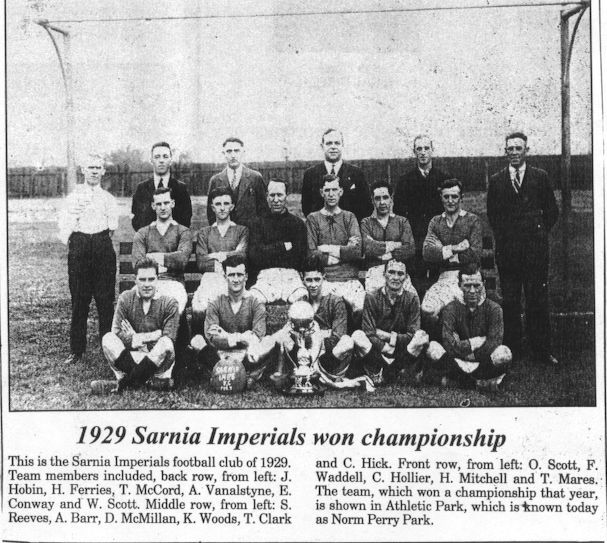|
It seems apt that the enduring icon of the CFL and Canadian football would be called the
Grey Cup — not a name that would fit the flashier league to the south.
But the name is also a little misleading.
The Grey Cup's 95-year history has been colourful enough, never travelling a bland or predictable path.
It certainly
hasn't followed a course the Cup's founder envisioned. Then again, Albert Henry George Grey, the fourth Earl Grey, probably
never guessed that after a distinguished career in His Majesty's service, his most significant legacy would be a football
trophy.
Grey, the popular Governor General of Canada from 1904 to 1911, planned for the Cup to be awarded to the top
Canadian senior hockey team, but was trumped by Sir Montague Allan, who donated the Allan Cup.
Undeterred, Grey declared
that his hardware should be awarded to the winner of the nation's rugby football championship, which would be contested by
clubs registered with the Canadian Rugby Union (CRU).
The first Grey Cup Game was played in 1909 at Rosedale Field
in Toronto, with the University of Toronto downing the Parkdale Canoe Club 26-6. The U of T won the Grey Cup the next two
years too, and became the first of two varsity dynasties — Queen's University won from 1922 to 1924.
A more unlikely
powerhouse emerged in 1933, when the Sarnia Imperials lost the lowest-scoring game in Grey Cup history to the Toronto Argonauts
by a 4-3 count at Sarnia's Davis Field. The Imperials would be back to win the Grey Cup in 1934 and 1936.
In 1935,
Winnipeg — saddled with the horrendous nickname the "Pegs" — became the first western Canadian team to win the
Grey Cup when they defeated the Hamilton Tigers.
Still, it took until 1941 — when Winnipeg defeated Ottawa —
for the East vs. West format to become entrenched within the very fabric of the Canadian football landscape. Even then, the
Second World War brought a format change, and from 1942 to 1944, the Cup went to a string of military clubs — the Toronto
RCAF Hurricanes, the Hamilton Flying Wildcats and St. Hyacinthe-Donnacona Navy.
The East-West rivalry finally reached
dizzying heights in the mid-1950s when the Edmonton Eskimos, boasting such legends as Jackie Parker, Normie Kwong, Johnny
Bright and Bernie Faloney, won three straight Grey Cup games over the Montreal Alouettes from 1954 to 1956.
Grey had
intended his Cup to be open only to amateur clubs, but the upheavals in Canadian rugby football organizations and alliances
meant those days were numbered. Regional, provincial and intercollegiate unions organized, re-organized and disbanded until
the Canadian Football Council (CFC) was formed in 1956 in association with the CRU.
The following year, a new era
in Grey Cup lore was ushered in when the game was telecast live coast to coast across Canada, beginning a tradition that continues
to this day.
In 1958, the CFC withdrew from the CRU and re-christened itself the Canadian Football League. Three years
later, the various rugby and football unions that competed for the Grey Cup finally coalesced into the Western and Eastern
Conferences — later the East and West Divisions — under the auspices of the CFL.
But if those moves clarified
the organization of Canadian football, things were at their cloudiest during the 1962 Grey Cup Game, the notorious Fog Bowl.
So thick was the fog rolling through Exhibition Stadium on Toronto's lakeshore on Sat., Dec. 1, that the final 9:30 had to
be played the next day. When the mist finally cleared, Winnipeg had edged Hamilton 28-27 for its fourth title in five years.
In 1976, the ending was much clearer. Tony Gabriel gathered in a touchdown pass on the final play of the game to give
the Ottawa Roughriders a thrilling 23-20 victory over Saskatchewan. In stark contrast to those come-from-behind heroics, the
biggest Grey Cup crowd in history — 68,318 at Montreal's Olympic Stadium — watched Montreal blow out Edmonton
41-6 in 1977 in one of the most lopsided games in Grey Cup history.
Edmonton more than exacted revenge, though, beating
Montreal in the final the next two years on their way to five straight Grey Cup titles.
Along the way, the Grey Cup
has suffered from the abuse and neglect that seems to be the due of any world-class trophy — just ask the Stanley Cup.
It's been left behind in hotel rooms after post-game parties, almost destroyed by fire, stolen and held for ransom,
broken in 1987 when an Edmonton Eskimo sat on it, and broken again in 1993 by another Eskimo who head-butted it.
For
a lot of fans, though, the greatest indignity suffered by the Grey Cup was in 1995, when it fell into American hands.
In
the midst of what many felt was a CFL identity crisis, the Baltimore Stallions beat Calgary 37-20 in the Grey Cup final in
Regina. But immediately following the 1995 season, the CFL scrapped its U.S. expansion experiment, the American CFL franchises
folded, and the Stallions were reincarnated as the latest version of Montreal Alouettes, which won the Cup last year.
Back-to-back
wins by the Toronto Argonauts in 1996 and 1997 gave way to a brief run that produced three different Grey Cup winners: Calgary
in 1998, Hamilton in 1999 and B.C. in 2000. The Stamps became the first Grey Cup Champions of the new millennium when they
defeated Winnipeg the following year in Montreal.
Montreal and Edmonton renewed their famous Grey Cup rivalry in the last two Grey Cup finals,
with the Alouettes winning in Edmonton in 2002 and the Eskimos coming out on top last year in Regina.
And so the table
is set for this year's Grey Cup in Ottawa.
Nearly a century of memorable games and rugged warriors battling it out
on football fields all across Canada in hopes of winning the Grey Cup.
Somehow, you just know Earl Grey must be beaming
with pride.
| 1929 IMPERIALS |

|
|

